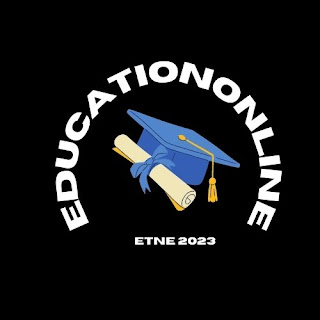
The New York Times Crossword is a popular word puzzle that has been entertaining people for over 80 years. It was first published in 1942 and has since become an iconic part of American culture. The puzzle is known for its clever clues and challenging answers, and it is a favorite among puzzle enthusiasts of all ages.
One of the most interesting things about the New York Times Crossword is that it has a language all its own. If you've ever tried to solve the puzzle, you know that the clues can be incredibly tricky, and the answers often require a deep knowledge of language and pop culture. But did you know that the puzzle also has its own informal language that is used by the people who create and solve it?
We'll take a closer look at the informal language of the New York Times Crossword. We'll explore the history of the puzzle, the different types of clues that are used, and some of the unique vocabulary that is associated with it. By the end of this article, you'll have a better understanding of what makes the New York Times Crossword so special, and you'll be ready to tackle some of its most challenging puzzles.
History of the New York Times Crossword
The New York Times Crossword was first created by Arthur Wynne, a British journalist who moved to the United States in the early 1900s. Wynne was a puzzle enthusiast, and he came up with the idea for a new type of word puzzle that would be published in the Sunday edition of the New York World newspaper.
The first crossword puzzle was published on December 21, 1913, and it was an immediate hit with readers. Soon, other newspapers across the country were publishing their own crossword puzzles, and the craze quickly spread. By the 1920s, crossword puzzles had become a national obsession, and they were being published in newspapers all over the world.
The New York Times was one of the first newspapers to start publishing crossword puzzles on a regular basis. The first Times crossword appeared on February 15, 1942, and it was an instant success. Since then, the Times crossword has become one of the most popular and respected puzzles in the world, with millions of people solving it every day.
Types of Clues in the New York Times Crossword
One of the things that makes the New York Times Crossword so challenging is the wide variety of clues that are used. Some clues are straightforward and easy to understand, while others are much more cryptic and require a deep knowledge of language and culture.
Here are some of the most common types of clues that you'll find in the New York Times Crossword:
Straightforward Clues: These are the easiest types of clues, and they usually involve a simple definition or synonym. For example, a clue like "Big cat" would be a straightforward clue for the answer "lion."
Rebus Clues: Rebus clues are a bit more challenging because they involve pictures or symbols that represent words or phrases. For example, a clue like "✈️🌎" would be a rebus clue for the answer "jet set."
Anagram Clues: Anagram clues involve rearranging the letters of a word or phrase to form a new word or phrase. For example, a clue like "Dormitory" could be an anagram clue for the answer "dirty room."
Cryptic Clues: Cryptic clues are some of the most challenging types of clues in the New York Times Crossword. They involve a combination of wordplay, puns, and cultural references. For example, a clue like "Ridiculous, but not a bird" would be a cryptic clue for the answer "absurd."
Hidden Clues: Hidden clues involve finding a word or phrase that is hidden within another word or phrase. For example, a clue like "Snack for a horse" could be a hidden clue for the answer "carrot."
Double Definition Clues: Double definition clues involve two different definitions that both lead to the same answer. For example, a clue like "Furry mammal" and "One who is good at math" could be double definition clues for the answer "beaver."
Homophone Clues: Homophone clues involve words that sound the same but have different meanings. For example, a clue like "Rider's footwear" could be a homophone clue for the answer "boot."
Cross-Reference Clues: Cross-reference clues involve referring to another clue or answer in the crossword. For example, a clue like "See 17-Across" would be a cross-reference clue that directs the solver to look at the clue or answer for 17-Across.
The Unique Vocabulary of the New York Times Crossword
In addition to the different types of clues that are used in the New York Times Crossword, there is also a unique vocabulary associated with the puzzle. This vocabulary includes words and phrases that are commonly used by the people who create and solve the crossword.
Here are some examples of the unique vocabulary of the New York Times Crossword:
Grid: The grid is the main framework of the crossword, and it is where the answers are placed.
Theme: The theme is the overarching concept or idea that ties the crossword together. For example, a crossword with a theme of "Broadway Musicals" might have all of its answers related to musicals.
Fill: The fill is the set of answers that are used to fill in the grid. These answers are chosen to fit the theme and the clues.
Across and Down: Across and down refer to the direction in which the answers are placed in the grid. Across answers go from left to right, and down answers go from top to bottom.
Black Square: A black square is a square in the grid that does not contain an answer. These squares are used to separate the answers and create the grid pattern.
Seed: A seed is a particularly interesting or unusual answer that is used as the starting point for building the crossword.
Stack: A stack is a group of answers that are placed on top of one another in the grid. Stacks are often used to create interesting patterns and fill in difficult areas of the grid.
The Language of Crossword Solvers
In addition to the vocabulary used by the people who create the New York Times Crossword, there is also a unique language used by the people who solve the puzzle. This language includes words and phrases that are commonly used to describe the process of solving the crossword.
Here are some examples of the language of crossword solvers:
Crosswordese: Crosswordese refers to the set of words and phrases that are commonly used in crossword puzzles, but are not commonly used in everyday language. These words and phrases are often used because they fit well into the grid, but they can be challenging for solvers who are not familiar with them.
Grid Fillers: Grid fillers are words and phrases that are used to fill in the grid, but are not particularly interesting or challenging. These words and phrases are often used to connect more interesting answers.
Crossword Nerd: A crossword nerd is someone who is passionate about solving crossword puzzles. These people often have a deep knowledge of language and culture, and they enjoy the challenge of solving difficult puzzles.
Across Lite: Across Lite is a software program that is used to solve the New York Times Crossword online
What is the "Ready Informally" New York Times Crossword?
The "Ready Informally" New York Times Crossword is a daily crossword puzzle that appears online and in print. It is designed to be challenging and entertaining for both novice and experienced crossword solvers.
How is the "Ready Informally" Crossword different from other New York Times Crosswords?
The "Ready Informally" Crossword is unique in that it features clues and answers that are designed to be more informal and conversational in nature. This often includes modern slang, pop culture references, and idiomatic expressions.
What types of clues are used in the "Ready Informally" Crossword?
The "Ready Informally" Crossword uses a variety of clue types, including fill-in-the-blank, wordplay, anagrams, hidden clues, double definitions, homophones, and cross-reference clues.
How should I apply Kesavardhini hair oil?
There are several ways in which Kesavardhini hair oil can be applied, including hot oil treatment, overnight treatment, pre-shampoo treatment, scalp massage, and hair mask. You can choose the method that suits you the most.
What is the difficulty level of the "Ready Informally" Crossword?
The "Ready Informally" Crossword is designed to be challenging, but not overly difficult. It is intended for solvers who are comfortable with standard crossword puzzle conventions, but may not have extensive knowledge of obscure words or trivia.
How can I solve the "Ready Informally" Crossword?
The best way to solve the "Ready Informally" Crossword is to read the clues carefully, and try to think of multiple possible answers that fit the clue. Crossword solvers often use a combination of logic, deduction, and trial-and-error to complete the puzzle.
Where can I find the "Ready Informally" Crossword?
The "Ready Informally" Crossword is available online on the New York Times website, as well as in the print edition of the newspaper. It can also be accessed through the New York Times Crossword app for mobile devices.
What should I do if I get stuck on a clue in the "Ready Informally" Crossword?
If you get stuck on a clue in the "Ready Informally" Crossword, don't give up! Try approaching the clue from a different angle, or take a break and come back to it later. You can also try using online resources such as crossword dictionaries or solver websites for hints or answers.


.jpg)
.jpg)

0 Comments